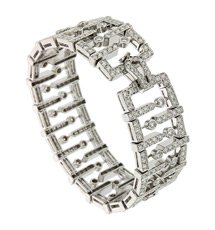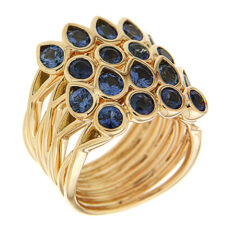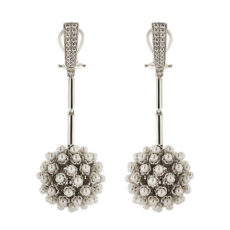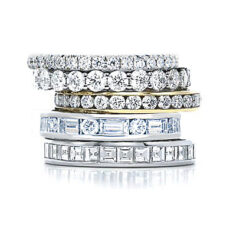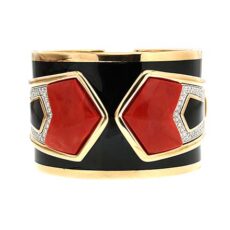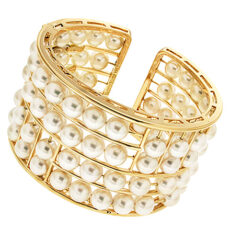Newsletters

All beautiful gemstones are not born inside the earth’s crust. There are some precious gemstones that surface from within the sea. One such beauty is the coral gemstone. It is a gemstone that evokes a feeling of intense liking due to the intense color it possesses. Since they are formed by living organisms, they fall into the category of organic gemstones.

Jewels such as mother of pearl stand apart from other jewels, this organic gem comes from animals. Mother of pearl, also known as nacre, is taken from shells. What makes mother of pearl stand out from other mollusks is its nacreous sheen, also called iridescence. Multiple species produce this gem, including those farmed for pearls.
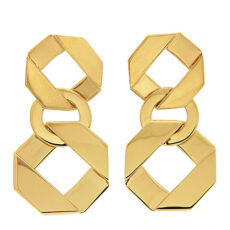
You may have noticed the sudden spurt of gold ornaments in the galleries this year, and in case you are wondering, yes, gold is one of the greatest trends that is going to dominate 2018. It was announced and confirmed by the fashion makers and designers early this year when gold was relaunched as the primary material in fashion shows. Now is a good time to add to your collection of earrings. Jewelers have already advanced their best foot in the game with the launch of some spectacular gold earrings by the very start of this year.
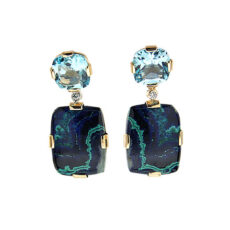
As their name suggests, earrings are a type of jewelry worn on the ear. Though some designs are offered as single pieces or sets of three, most come in pairs. Earrings come in a variety of shapes, including hoops, spheres, and squares. Complex styles may include hanging elements, knots and interlocking pieces.
There is no set location for earrings. They may be anywhere on the external ear, with different names designating the location. In the United States, earlobes are the most common. While other types are specified as “cartilage piercings,” those on earlobes are just “piercings.”

Lapis lazuli is an opaque gemstone famed for its luxurious blues. Depending on the individual stone, it may feature streaks of white, golden flecks, and even hints of green. In ancient times, it was known as “sapphire” along with other blue gems. However, there are many features which distinguish lapis lazuli from corundum.

While jewelry can be made of string, plastic, wood, glass and other items, they’re closely associated with precious metals. These metals have many qualities which make them ideal to work with, including beauty and ease of shaping. Several materials qualify as precious metal, including gold, silver, palladium and platinum. Of these, gold and platinum are quite popular for fine jewelry.
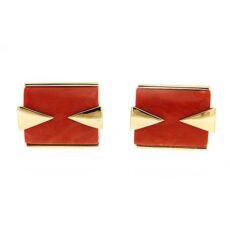
Suiting up for the big evening is just not enough if a standout is what you want to be. There are many ways to liven up your suit and make it distinguishable from the rest. Cufflinks are one of the very few accessories that can make a world of a difference to a suit. Small, but distinct, a pair of cufflinks can flatter your attire like nothing else. Cufflinks are fashioned to up the ante or downplay the sense of stiffness in a suit.

Flora has a very special place in jewelry, often imitated down to the last detail in intricate pieces. Flowers can be carved into shapes. They are best achieved through gems that are soft enough to carve, yet sturdy enough not to break as they are being fashioned. In addition to floriography, flower jewelry was popular throughout the Victorian period. This was displayed early on with Queen Victoria’s orange blossom themed wedding set.
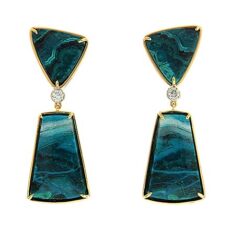
Like other members of the chalcedony family, chrysoprase is a rock made of quartz and morganite finely intertwined together. What distinguishes chysoprase is traces of nickel oxide which give the jewel its distinctive apple green. Tsavorite is a type of grossular stone, which in turn is a version of garnet. This jewel’s crystal structure is made of calcium, aluminum, silica and oxygen, though its verdant hues are due to traces of chromium and vanadium. Malachite is an opaque gemstone with green hues and banded patterning. People have admired the gemstone for thousands of years. Ancient Egypt held the stone in high regard, giving religious significance to its color.
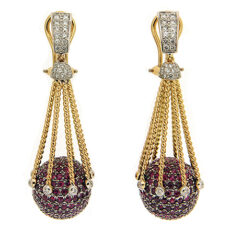
Rubies are the most celebrated of red gemstones. Their name in Sanskrit means “the king of precious stones,” and the gems appear in the crown jewels of many countries. Even now, the stone can command the highest per carat prices of all colored gemstones. For many years, people believed that all crimson jewels were rubies. By the nineteenth century, scientists understood that rubies were a subset of the mineral corundum, and a close relative of sapphire. Rubies are made of two parts aluminum and three parts oxygen, with trace amounts of chromium providing their famous hues.

Emeralds, along with rubies and sapphires, are among the most famed of colored gemstones. For centuries, all green jewels, including tourmaline and peridot, were considered emeralds. During the 1700s, European chemists conducted experiments on beryls and emeralds, discovering they were chemically similar and had the same crystal structure.
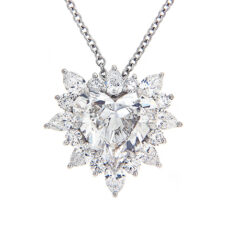
The Gemological Institute of America aims to be as precise as possible when it comes to certified diamonds. Jewels are placed in uniform packaging before arriving at the laboratory to reduce factors that may skew the grading process. The stones are then evaluated by professionals under controlled lighting. Another step to get accurate grading is by ensuring that the diamond is loose, or outside of a setting.
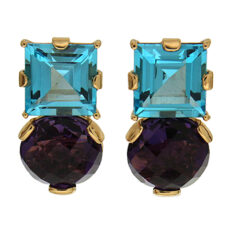
Topaz is a silicate gemstone with aluminum and fluorine in its chemical formula. In its purest state, the jewel is completely colorless. Topaz’s pinks, reds and purples are due to trace elements of chromium, while blue is often the result of irradiation. Brown and yellow appear when there are irregularities in the crystal’s atomic structure.
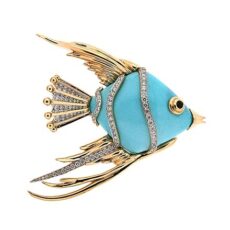
Turquoise is an opaque gemstone most famous for its blue green color. It has been beloved for thousands of years, and has been found in Egyptian tombs dating to 4,000 BCE. Despite its long history, the name “turquoise” is relatively new, dating only as far as the 16 th century. At this time, the gemstone came to Europe through the country of Turkey. The French word “turques” eventually became “turquoise.”

“Coral” commonly refers to sea animals of the Anthozoa class. They’re invertebrate creatures forming colonies of many shapes and structures, at times resembling an underwater garden. All beautiful gemstones are not born inside the earth’s crust. There are some precious gemstones that surface from within the sea. One such beauty is the coral gemstone. It is a gemstone that evokes a feeling of intense liking due to the intense color it possesses. Since they are formed by living organisms, they fall into the category of organic gemstones.

Beautiful. Cherished. Rare. Jewelers and connoisseurs have sung paeans about this dazzling gemstone. No jewel has ever fascinated the public more than diamonds. In the 1950s, the Gemological institute of America developed the 4Cs grading system. Prior to this, many companies had ways of evaluating diamonds, but the terms were vaguely defined, and there was no agreed upon standard. Examining a diamond’s cut, color, clarity and carat weight provides a global grading system easy for jeweler and clients alike to understand.

“A Sea-faring Gem” – Aquamarine is a member of the beryl mineral family, it’s pale blue color tinted with green inspired its name, taken from the Greek word for sea water. Aquamarines are the light blue birthstone of March. Like its cousin the emerald, aquamarines are a type of beryl, but colored with iron rather than chromium or vanadium. Beryl forms within gaps in the earth’s crust, where mineral rich water containing specific elements gradually forms into a crystal. The resulting stones may be enormous, weighing as much as 110 kilos.
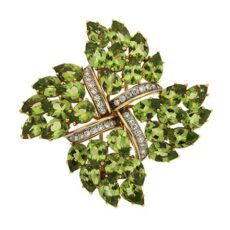
Peridot is a jewel quality version of the mineral olivine. The gem is most famous for its verdant hues, which range from brownish or yellowish green to saturated green and lime yellow. The beautiful, shimmering, pale green peridot is associated with a history that is not just intriguing but which dates back to as early as 1500 B.C., making it one of the world’s oldest known gemstone. The tiny Egyptian, St. John’s Island (now referred to as the Egyptian Island of Zabargard) in the Red Sea was documented to be the only ancient source of the gemstone.
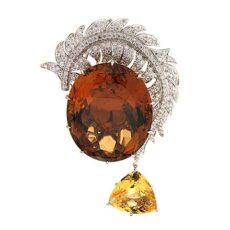
Even the most beautiful and well-made jewelry may dull over time. The more a piece is worn, the more likely it is to come into contact with dust, body oils, cosmetics etc., which may interfere with the way it reflects light. Restoring gemstones to their former glory is as simple as knowing the appropriate techniques to cleaning your different types of jewelry. Please be aware that any type of cleaning presents a risk of breakage and or damage to the gemstone. The information being given is safe if done properly and with the understanding that no liability or responsibility is incurred by Valentin Magro New York.


